The Indefinable: Nyugen E. Smith’s Explosive Artistry
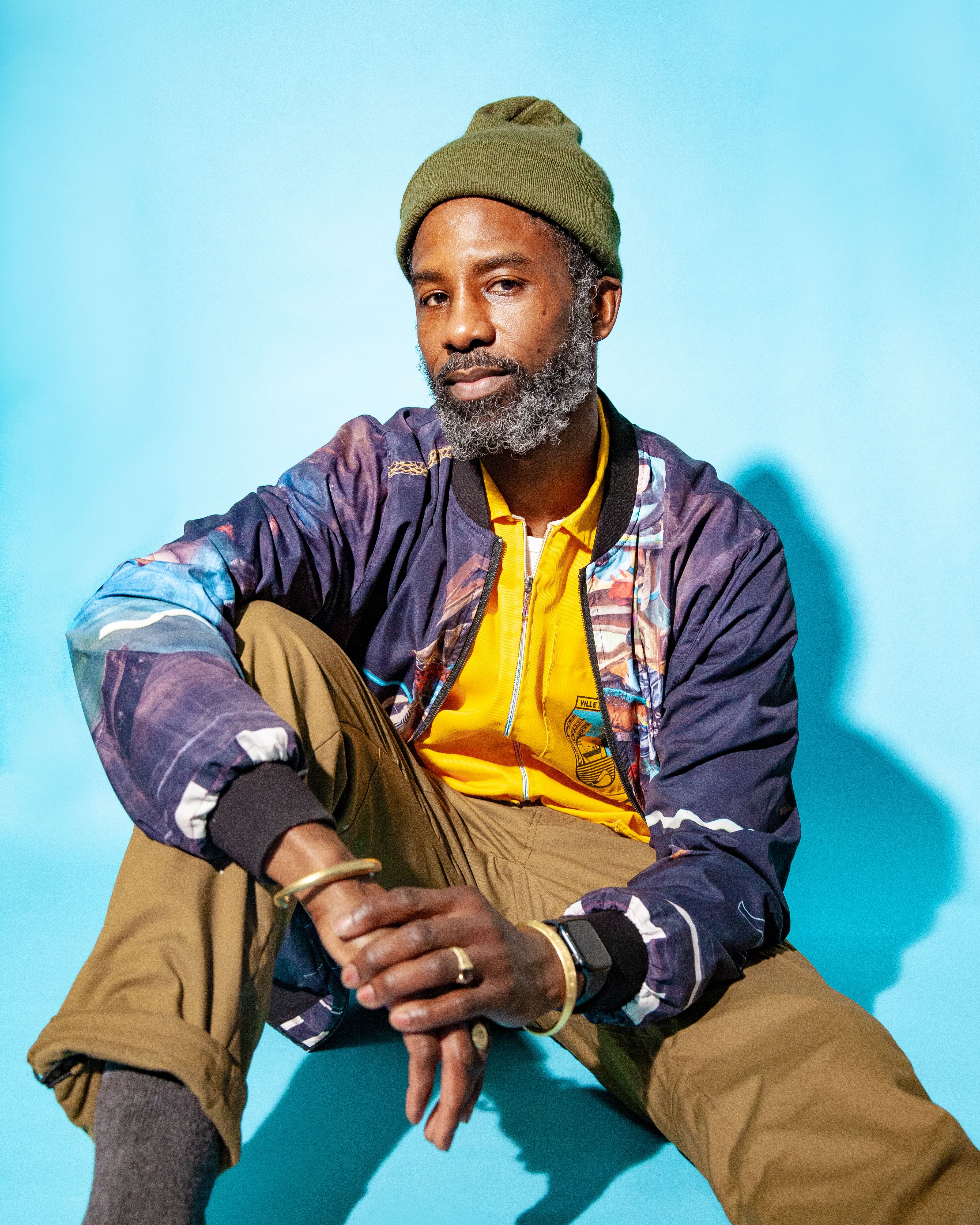
by Sophie Lucido Johnson (MFA 2017)
Portraits by Erica MacLean
To try to summarize Nyugen E. Smith’s (MFA 2016) oeuvre would be a fool’s errand. His work is too vast and too full; it spans every conceivable art form and is at once about the universal experience of being alive and the specific experience of being a first-generation American born to parents from Caribbean countries.
“I’ve been rethinking ways that I talk about the work,” Smith said of his own artistic practice. When we spoke, he was in Washington, DC, finalizing work for the cumulative performance for the CulturalDC Capital Artist Residency, of which he is the second-ever recipient. As he polishes off three months of work that ranged from writing to mixed-media work on paper to found objects to sculpture to performance, Smith thinks it might be time for him to change his elevator pitch.
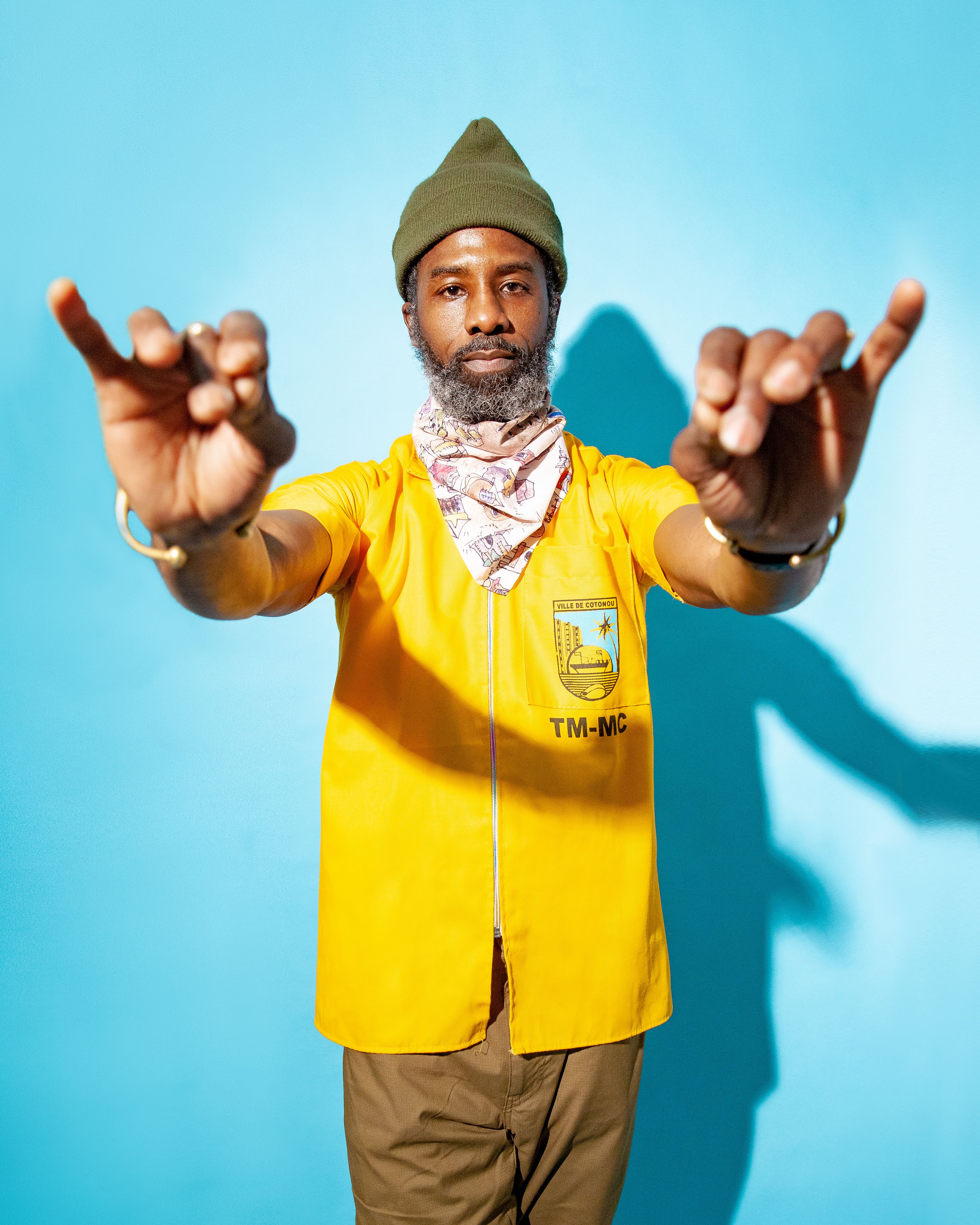
He used to tell people he was an interdisciplinary artist who primarily made mixed-media works, focusing on the impact of colonialism in the African diaspora. But in some ways, these days that description feels too broad; in other ways, it’s too narrow.
“That broad umbrella gives me room to play. And within this play, I'm able to learn new histories by researching and investigating, and continuing to make this work,” Smith said. And that makes sense: so much of Smith’s work is deeply grounded in histories that have been stifled or erased. His way of carefully investigating these histories through language, materials, and construction has made his work definitive and singularly about the experience of African descendants. At the same time, its core is the human experience.
Smith’s father is from Haiti and his mother is from Trinidad and Tobago, where he spent his formative years. As a child in Trinidad, Smith absorbed cultural care around processes and materials in craftsmanship. Smith’s grandfather built cabinets, his uncle taught him how to draw, and his whole family built and maintained a large hand-crafted chicken coop. His childhood home was filled with handmade art, objects, carvings, and reliefs, imbuing Smith with a sense of understanding of where things come from.
“When you know the person who made something, you’re not just seeing it as an object, but it had a personality and a history that you could trace. It wasn’t something that came from a faceless store or a factory,” Smith said.
When he was eight, Smith moved to live with his mother in Jersey City. In the US, Smith’s mother took him and his brother to see African dance performances, art exhibitions, museums, studios, and Kwanzaa festivals. She made clear to her sons the importance of both the arts and their Caribbean heritage.
“That broad umbrella gives me room to play. And within this play, I'm able to learn new histories by researching and investigating, and continuing to make this work.”
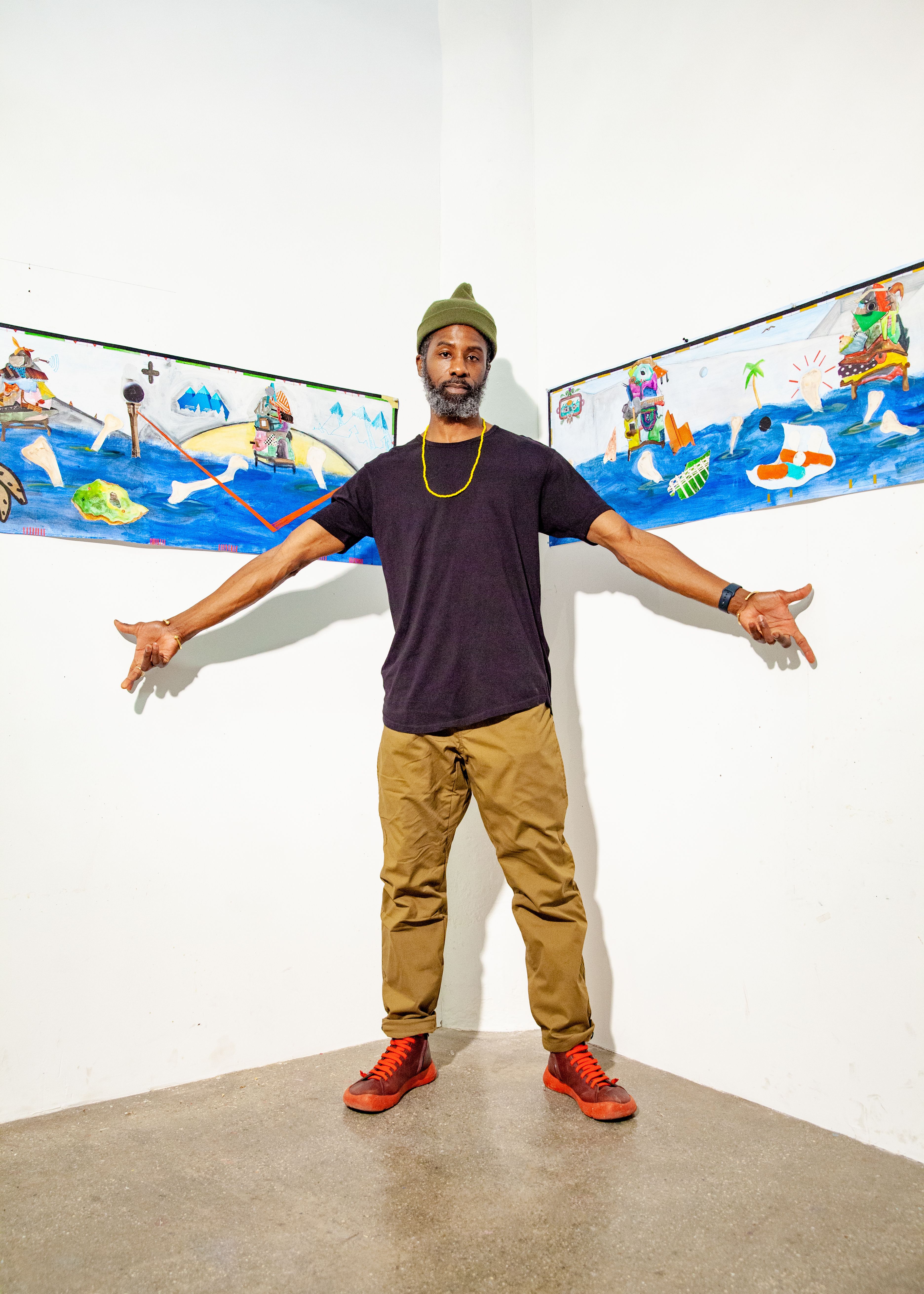
Nevertheless, Smith wasn’t always sure that he wanted to be an artist. At first, he thought he’d be a lawyer, but his heart wasn’t in it. In undergrad, he took two summer art classes—one in painting and the other in sculpture.
“That changed my whole trajectory,” said Smith. “I realized that this was what I wanted to do.”
Smith first gained major recognition with a series of gorgeously pastiched sculptural works he called Bundle Houses. His breakthrough for that project came in London, where he was visiting his now-wife whose friend had recently returned from a photojournalistic excursion to Uganda.
“The images she took had some of the shelters that people were building out of found materials. They were using things that were just being discarded, turning them into these brightly colored objects,” Smith said.
Up until then, Smith had been limiting his materials to ones he considered natural: wood, cloth, leather—media that was largely brown, ochre, muted red, and black. But looking at the images from Uganda, Smith was struck by the bright hues of the found materials. The shelters looked sculptural. A lightbulb went off: if he could use these found-object shelters as sculptural inspiration, he could not only make something beautiful, he might also help raise awareness about major socio-political and environmental issues in Africa. Building sculptures using found materials would give his work purpose.
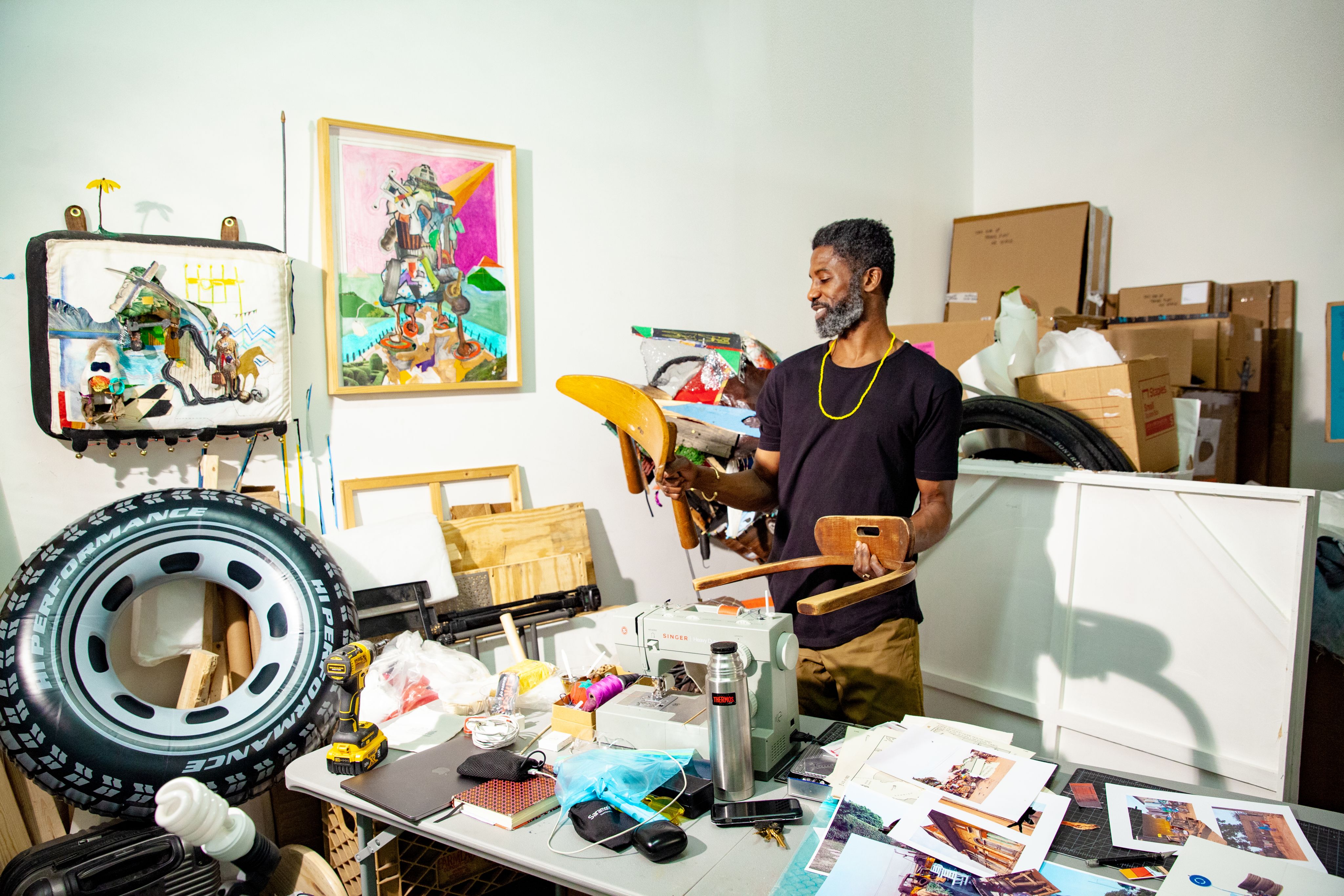
Smith in his studio.
Smith in his studio.
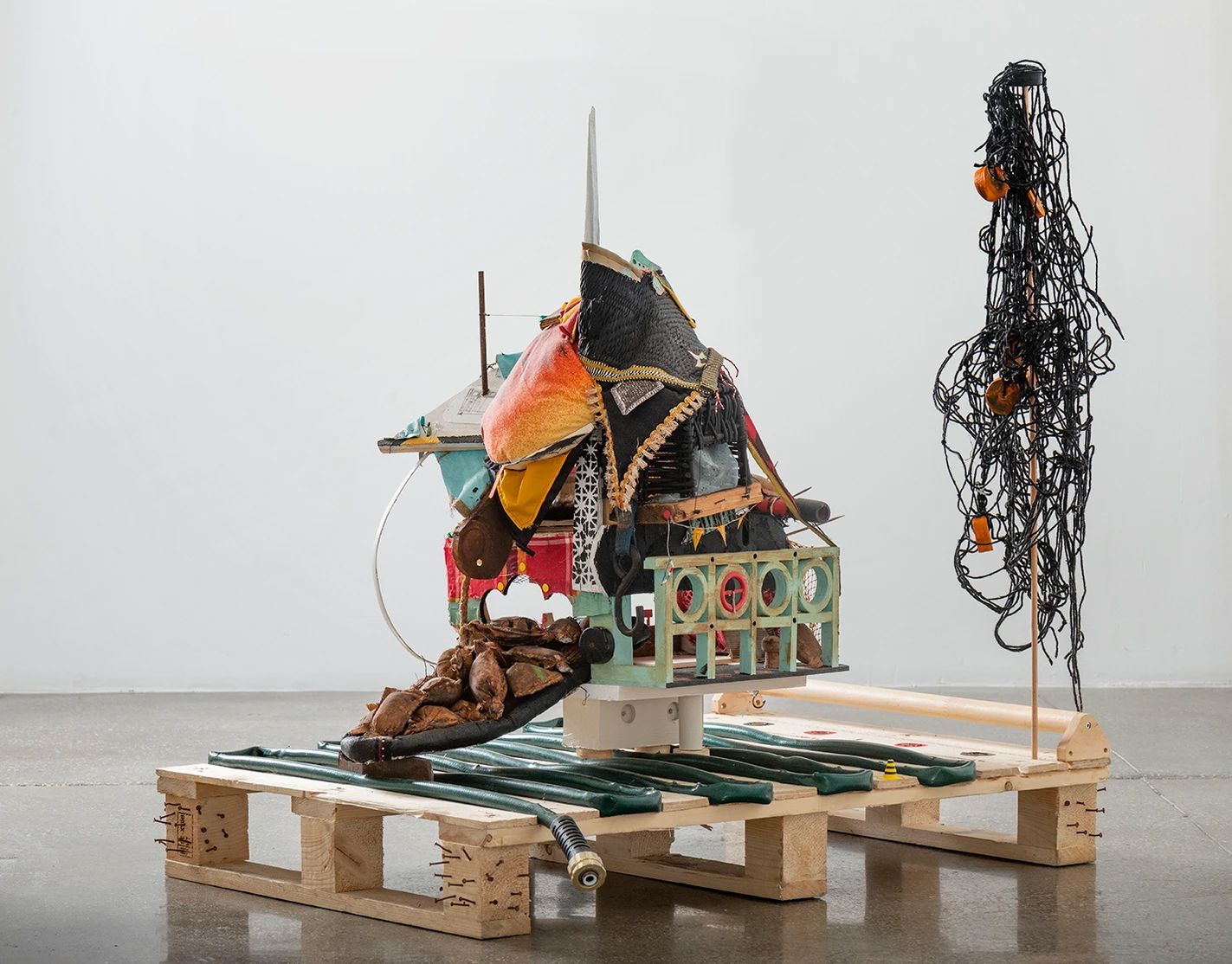
Nyugen E. Smith, Bundlehouse: FS Mini No. 9 Sunset View 2
Nyugen E. Smith, Bundlehouse: FS Mini No. 9 Sunset View 2
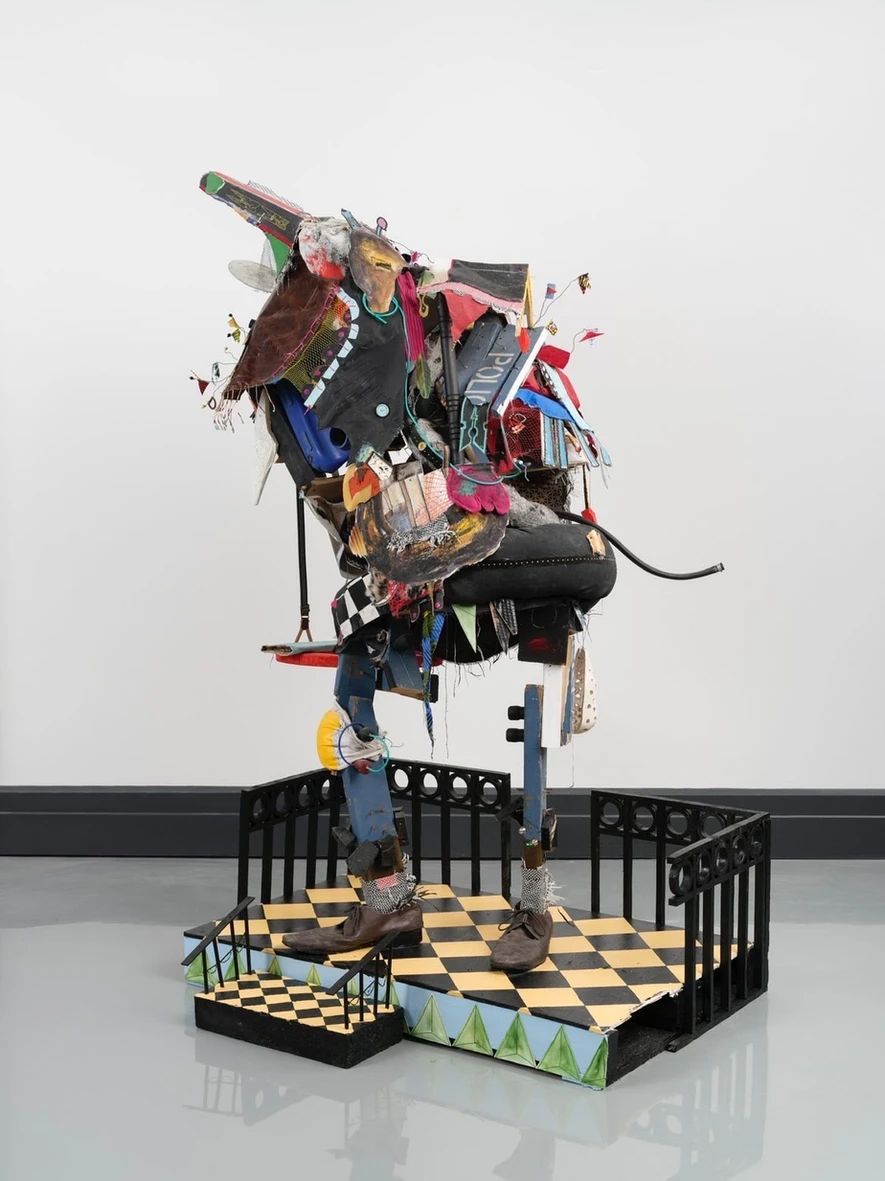
Nyugen E. Smith, Bundlehouse: Rise Up and Walk II
Nyugen E. Smith, Bundlehouse: Rise Up and Walk II
Smith’s Bundle Houses led to his first solo exhibition at the Abington Art Center in Pennsylvania in 2008, and that was only the beginning. Since then, he has had more than a dozen solo exhibitions all over the world; dozens of group exhibitions, performances, awards, and collections; and five residencies. He received his master of fine arts from the School of the Art Institute of Chicago (SAIC) in 2016, and in 2020 received the SAIC Distinguished Alumni Award.
At SAIC, Smith had the opportunity to work with Associate Professor, Adj. D. Denenge Duyst-Akpem, whose award-winning work melds design, ritual, and ecology through a variety of artistic practices. Duyst-Akpem’s mentorship was crucial to Smith and continues to be foundational to his work.
“From our very first meeting, she gave me this plethora of resources,” Smith said. “It was exactly what I needed.” At the time, Smith’s focus was largely on performance art, but he was struggling to find his place.
“I was going to see all these other performances, and I always felt like there is a kind of performance work that I'm not very interested in making,” he said. He wasn’t sure where his style of performance fit in, until Duyst-Akpem suggested that his work was skewing more in line with the legacy of performance in the African Diaspora and handed him the book Black Theater: Ritual Performance in the African Diaspora by Paul Carter Harrison and Gus Edwards.

Still from the performance Lest We Forget. Photo: Raquel Peréz-Puig
Still from the performance Lest We Forget. Photo: Raquel Peréz-Puig
A video of Lest We Forget
“That was the book that I needed to back me up to give me a scholarship I could refer to when I’m talking about my work. I can say, ‘Read this. I’m coming from this lineage.’”
As Smith dove further into theater and performance, he began collaborating with Marvin Fabien, an artist from Dominica and Martinique, who passed away in 2020. They created and performed a piece called Lest We Forget, which intentionally focused on climate disasters and their economic, social, and ecological effects.
“That was the first time I was talking to someone, and we were dealing with the same ideas and content, but approaching it with totally different tools and materials,” Smith said. “I was so excited by that. I had always thought about making performances that included sound and voice and movement.”
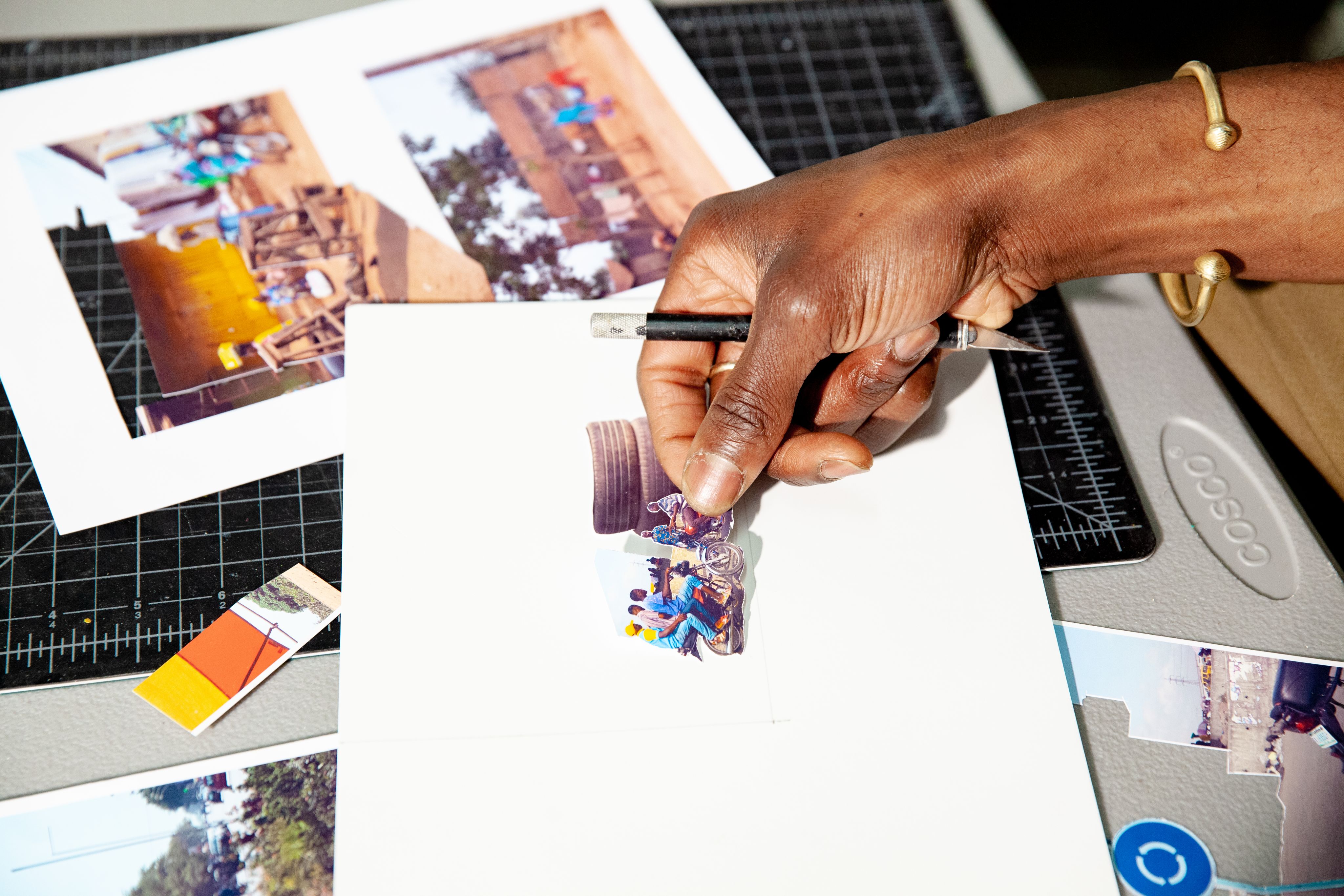
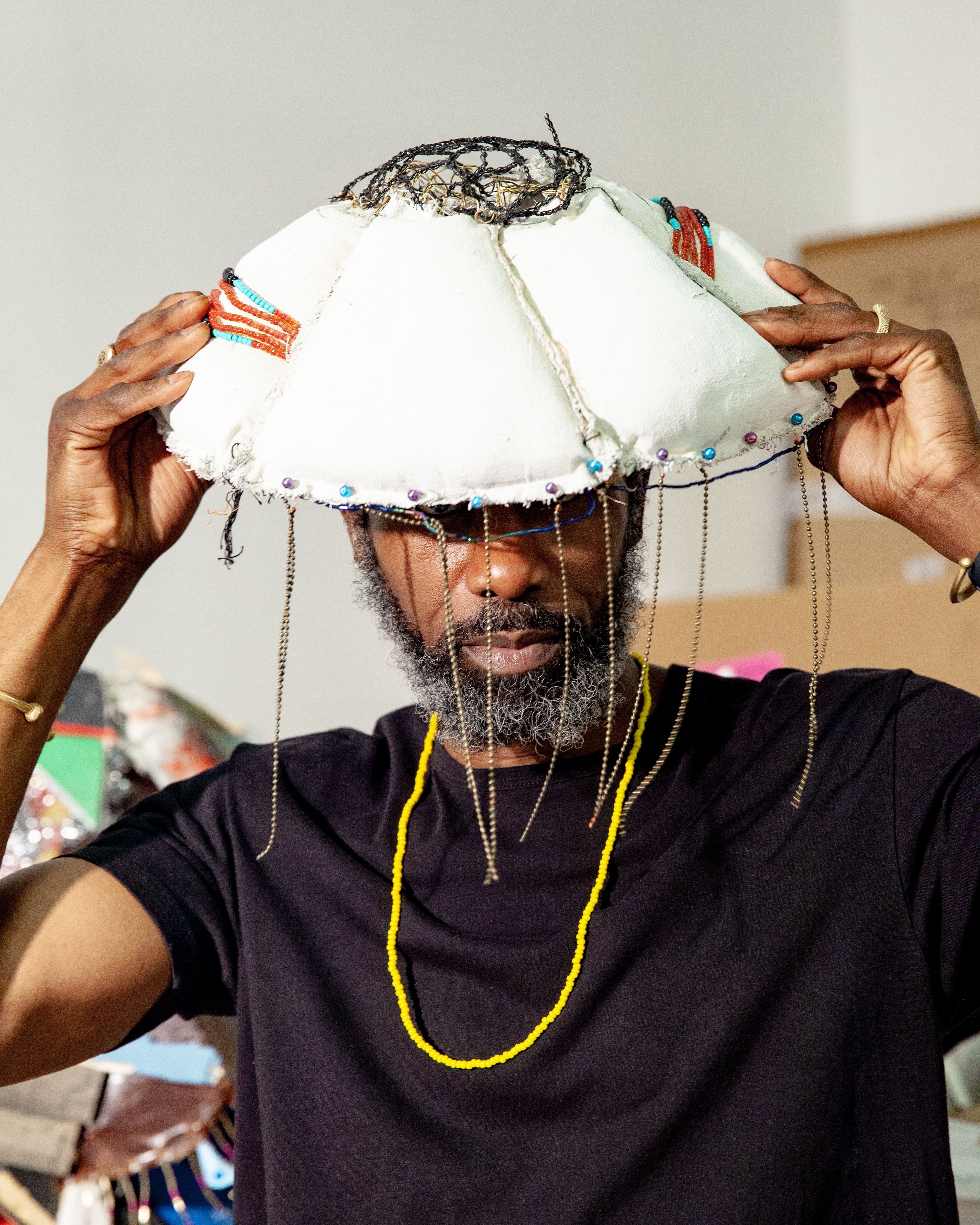
Today, Smith has worked in every conceivable material and style. His Bundle Houses led to a series of pieces called Spirit Carriers—found object constructions that were presented suspended from the ceiling. He designed and created flags to signify real independence and Black/Caribbean claims for reparations, which culminated in a performance in Martinique. He worked in two-dimensional collage, huge porcelain installations, multimedia drawing, photography, language, music, video, theory, and on and on and on. He even created (or maybe, rather, distilled) a language related to Haitian Creole, which will be developed into a musical notation system. Smith’s work exemplifies the word “boundless.”
But the purpose that Smith sensed when he initially conceptualized his Bundle Houses is still clear: if anything, it’s stronger than ever. He is bringing an intentional artistic voice and awareness to the trauma, resilience, spirit, violence, and memory of both ancestral and living people in the Black African diaspora. Smith’s work refuses to look away from what is painful: he insists on holding both the beauty and the violence; the destruction and the survival; the inhumane and the human. ■